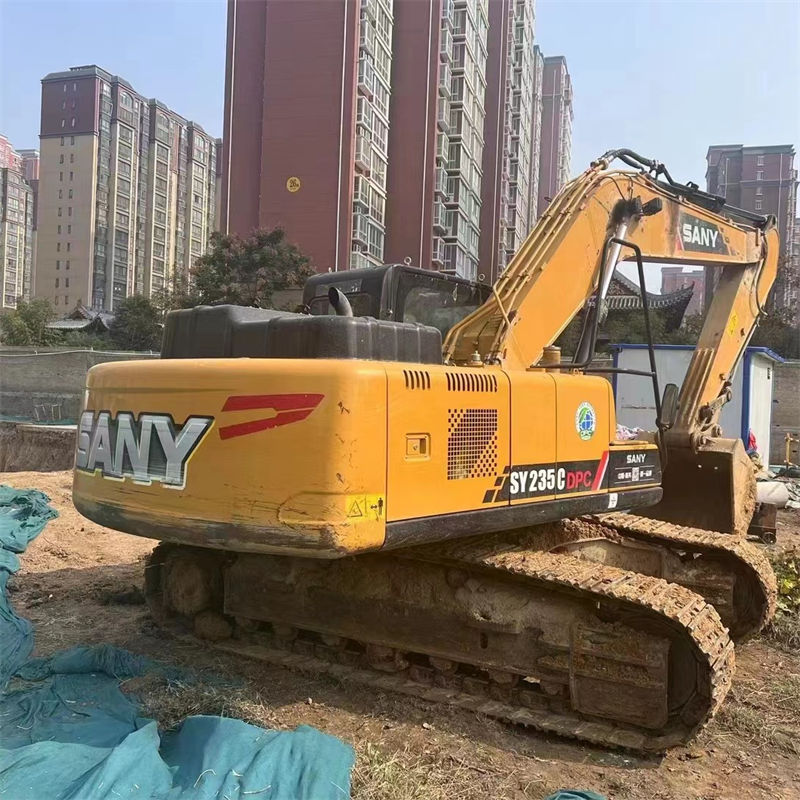The main reason why the upper body of the excavator cannot rotate is that other working devices operate normally when the excavator is working, but the upper body cannot rotate. Fault analysis is carried out based on the working principle of the excavator’s swing motor. It can be seen from the schematic diagram that the rotation failure of the excavator’s upper body is related to the main pump, self-pressure reducing valve, swing operating handle, swing lock switch, swing lock solenoid valve, swing motor, swing reducer, swing bearing, etc. Fault detection should be analyzed and eliminated one by one according to the principle from simple to complex to avoid blind disassembly and unnecessary losses. The idea of fault analysis is to first analyze the main pump and self-pressure reducing valve, because only the upper body cannot rotate, other working devices are operating normally, and the main pump and self-pressure reducing valve are common components of the hydraulic part of the excavator. This shows that the main pump and self-pressure reducing valve are not faulty. The second is to ask whether the excavator had any abnormal noise or vibration before the failure. According to experience, if the slewing reducer or slewing support fails, abnormal noise or vibration will definitely occur. If there is abnormal noise or vibration, it may be a problem with the slewing reducer or slewing support. If not, proceed to step 3. The third is to measure the rotation control pressure and check whether the rotation control pressure value is within the normal range. Then check the rotary main valve core. The main valve core should move flexibly in the valve body without sticking, which means that the main oil line can reach the rotary motor smoothly. The fourth is to check the rotary lock switch (in the OFF position), and measure the voltage at both ends of the switch and the resistance of the rotary lock solenoid valve coil to see if the voltage or resistance is normal. If it is normal, connect a tee joint to the outlet of the rotary solenoid valve control oil line and a 4MPa pressure gauge, and operate the excavator to rotate. If the pressure here is found to be too low, it means that the oil pressure flowing to release the brake is too high. If it is too low, the brake cannot be released and the excavator will not be able to rotate. If there is a fault, the valve core should be taken out, each component cleaned, reinstalled and then tested to eliminate the fault.
The fault of excessively large rotation angle of the upper body is mainly manifested in that when the rotation operation is completed and the operating handle is in the neutral position, the excavator’s rotation deflection angle is often too large under the action of inertial force, making it unable to reach the position that the operator wants to reach. This fault phenomenon in the second-hand excavator market should be caused by untimely rotation braking or insufficient braking force, which is related to the release of brake oil pressure, rotation lock solenoid valve, rotation brake pads, rotation brake seal, etc. First, check the circuit part of the rotary locking valve. The circuit connection should be firm and there is no short (open) circuit. The solenoid valve measuring coil and valve core should work normally. If there is no fault in the circuit part, the brake release oil pressure should be measured. If the brake oil pressure is around 3MPa, it means the pressure is normal, so the fault should be on the swing motor. Then check the rotary motor, remove the rotary motor, check whether the spring elasticity is normal, whether it is broken, and whether the sealing ring on the brake pressure plate is intact. Then check the brake oil return line to see if the throttle hole of the oil return line is blocked. If the oil return line is blocked, it will cause the oil return to be too slow, the time will be prolonged, and the time for the brake part to take effect will be delayed accordingly. Therefore, the slip amount (ie, deflection angle) is too large when the rotary motion stops. When a failure occurs, all components should be cleaned, paying special attention to the throttle holes and small oil passages.
Conclusion: Any mechanical equipment may malfunction during use, and excavators are no exception. During the use of the excavator, the operation should be carried out strictly in accordance with the regulations and regular maintenance should be carried out to minimize the occurrence of failures. After a fault occurs, the fault should be carefully analyzed and the machine should not be dismantled blindly. Only after truly understanding the principle of system failure can we make a correct judgment. Blind disassembly will not only fail to clear the fault, but will also cause delays in the construction period and waste manpower and financial resources.
Please continue to follow us for more exciting content. If you need to buy a second-hand excavator or excavator spare parts, please contact us, CCMIE will serve you wholeheartedly!
Post time: Feb-08-2024

